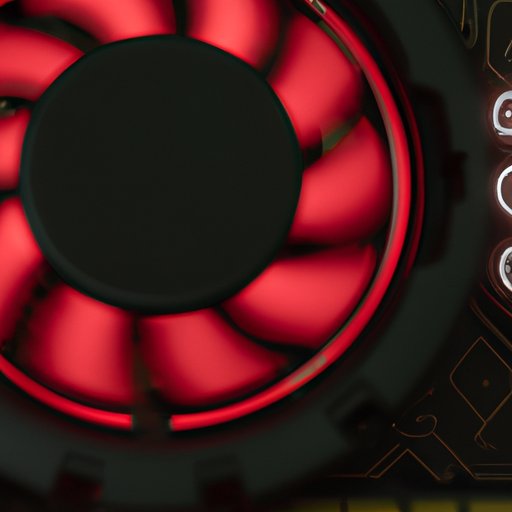
Introduction
GPU overclocking refers to the process of increasing the operating speed of a graphics processing unit (GPU) beyond the manufacturer’s recommended specifications. The benefits of overclocking include improved performance in games and other graphics-intensive applications. However, overclocking also poses some risks, such as decreased GPU lifespan and increased power consumption.
The purpose of this article is to provide a comprehensive guide to safe and effective GPU overclocking. We will cover the basics of GPU overclocking, step-by-step tutorials for beginners, advanced tips for expert overclockers, common mistakes to avoid, and do’s and don’ts for maximizing gaming performance. Finally, we will delve into the science behind GPU overclocking, including benchmarks and testing.
The Beginner’s Guide to Overclocking: Step-by-Step Tutorial for GPU Optimization
The first step in overclocking your GPU is to ensure that you have the right hardware and software requirements. You’ll need a graphics card that supports overclocking and a reliable PSU (power supply unit).
Next, you’ll need to choose the right software for overclocking your GPU. There are several options available, including MSI Afterburner, EVGA Precision X1, and ASUS GPU Tweak II. Once you’ve downloaded and installed your preferred software, you can begin adjusting your GPU’s clock speeds.
It’s important to increase clock speeds gradually, testing the stability of your GPU at each step. You can stress-test your GPU using tools like FurMark or 3DMark to ensure it can handle the increased clock speeds. If you encounter any issues during the overclocking process, you can use the software’s default settings to revert to the original clock speeds.
Some common issues you may encounter during GPU overclocking include crashes, graphical glitches, and freezes. These issues can be resolved by tweaking your GPU’s voltage and power limit settings, which we’ll cover in the next section.
Unlock Your Graphics Card’s Potential: Expert Tips for Safe GPU Overclocking
For experienced overclockers, there are several advanced techniques that can be used to take your GPU overclocking to the next level. These techniques include bios-level overclocking, voltage control, and performance tuning.
Bios-level overclocking allows you to modify your GPU’s clock speeds directly from the motherboard’s BIOS. This can be a more advanced and risky process, so it’s recommended that you do thorough research and follow the instructions provided by the motherboard manufacturer.
Voltage control refers to the process of adjusting the voltage delivered to your GPU. Increasing the voltage can help stabilize higher clock speeds, but it also increases power consumption and heat production. It’s important to monitor your GPU’s temperature during voltage control and ensure that it remains within a safe range.
Performance tuning involves adjusting a range of settings to optimize your GPU’s performance. This can include setting a custom fan curve, adjusting power limits, and fine-tuning clock speeds and voltage.
Choosing the right cooling solution is also critical for safe and effective GPU overclocking. A powerful aftermarket cooler, such as a liquid cooling system or a high-end air cooler, can help keep your GPU’s temperature under control during overclocking.
10 Common Mistakes to Avoid When Overclocking Your GPU
When overclocking your GPU, it’s important to avoid common mistakes and pitfalls that can damage your hardware or decrease your system’s performance.
One common mistake is failing to monitor your GPU’s temperature. Overclocking generates more heat, and if your GPU overheats, it can cause irreversible damage. It’s important to use monitoring software, such as GPU-Z, to keep an eye on your GPU’s temperature and adjust your overclocking settings accordingly.
Another mistake to avoid is pushing clocks too high too quickly. Incremental adjustments are safer and more effective than large jumps in clock speeds. It’s also important to test your GPU’s stability after each adjustment to avoid crashes and other issues.
Failing to test for stability is another common mistake. Stress-testing your GPU can help you identify stability issues before they become a problem.
Other mistakes to avoid include using outdated overclocking software, not backing up your original settings, and choosing an inadequate cooling solution.
Maximizing Your Gaming Performance with GPU Overclocking: Do’s and Don’ts
GPU overclocking can significantly improve your gaming performance, but it’s important to approach it carefully and with the right techniques. Here are some do’s and don’ts for maximizing gaming performance through GPU overclocking:
Do:
- Research and choose the right software and hardware for your GPU overclocking.
- Incrementally adjust clock speeds and test for stability.
- Maintain safe GPU temperatures during the overclocking process.
- Back up your original settings and monitor your GPU’s performance after the overclock.
Don’t:
- Push your GPU’s clocks too high too quickly, risking instability and damage.
- Overcommit to a specific clock speed without due consideration to power consumption and heat production.
- Disregard the importance of your cooling solution.
The Science Behind GPU Overclocking: Understanding the Numbers and Benchmarks
GPU overclocking involves several technical concepts, including clock speed, voltage, and benchmark testing.
Clock speed refers to the speed at which your GPU processes information. Increasing clock speed can improve performance but can also increase power consumption and generate more heat.
Voltage refers to the amount of power delivered to your GPU. Increasing voltage can help stabilize higher clock speeds, but it also increases power consumption and heat production.
Benchmark testing involves using tools like 3DMark or Unigine Heaven to test your GPU’s performance before and after overclocking. This can help you identify the performance gains and potential stability issues caused by overclocking.
Conclusion
In conclusion, GPU overclocking is a powerful tool for improving your gaming performance and optimizing your system. To ensure safe and effective GPU overclocking, it’s essential to choose the right software and hardware, incrementally adjust clock speeds, monitor your GPU’s temperature, and test for stability.
Finally, always be aware of the risks and potential downsides of overclocking, including decreased GPU lifespan and increased power consumption. With the right techniques and precautions, however, GPU overclocking can help you unlock your hardware’s full potential and take your gaming experience to the next level.




